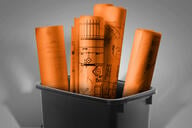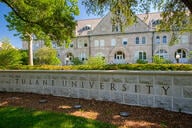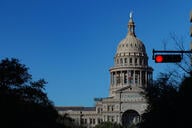You have /5 articles left.
Sign up for a free account or log in.
A decade is an eternity in the ed-tech world. A draft of a report on academic freedom and electronic communications, updated for the first time since 2004, shows the American Association of University Professors is moving to extend its protection of faculty rights to keep up with advances in technology.
The report, currently in draft form, contains thoughts on topics ranging from social media to cloud computing and cybersecurity, recommending a strong model of shared governance to ensure that faculty members are informed about and involved in solving technology issues. The AAUP will spend the next month collecting input and modifying the contents ahead of its formal adoption next year.
Even though nine years have passed since the previous version of the report was released, the core idea behind that report remains untouched:
“Academic freedom, free inquiry, and freedom of expression within the academic community may be limited to no greater extent in electronic format than they are in print, save for the most unusual situation where the very nature of the medium itself might warrant unusual restrictions -- and even then only to the extent that such differences demand exceptions or variations,” the 2004 report read.
Instead, the new report refreshes the arguments behind that idea in light of new technologies and teaching methods.
Previous reports on academic freedom have always concluded that instructors “are entitled to freedom in the classroom” (a quote from the 1940 “Statement of Principles on Academic Freedom and Tenure”), but the 2004 report noted that the boundaries of the classroom were eroding.
“Thus the concept of ‘classroom’ must be broadened to reflect these realities,” that report read. “The ‘classroom’ must indeed encompass all sites where learning occurs -- websites, home pages, bulletin boards, listservs, etc.”
Of course, the 2004 report did not predict the hype surrounding massive open online courses or the proliferation of flipped and blended classrooms. In response, the AAUP has substantially broadened its definition of “classroom.”
“However, it is critical to reiterate that a classroom is not simply a physical space, but any location, real or virtual, in which instruction occurs, and that in classrooms of all types the protections of academic freedom and of the faculty's rights to intellectual property in lectures, syllabi, exams, and similar materials are as applicable as they have been in the physical classroom.”
Hans-Joerg Tiede, professor of computer science at Illinois Wesleyan University, said in an email that the updated language builds on the AAUP’s stance on academic freedom.
“The AAUP has repeatedly asserted that the copyright of courseware resides with the faculty member, and this statement makes it asserts that this extends to online learning,” Tiede, a former AAUP chapter president, wrote.
Neither did the 2004 report anticipate that colleges and universities would outsource IT services to third parties. Since moving a learning management system or employee database to the cloud involves signing away some control over the data, the report therefore suggests that “Faculty need to understand more completely the implications for academic freedom of the expanded use and variety of electronic communications technologies, and they should be directly involved in the formulation and implementation of policies governing such technology usage.”
But threats to faculty members’ academic freedom can also come inadvertently from their peers, the report notes. Social media platforms such as Twitter can broadcast ideas meant for small groups of colleagues to a global audience, which could lead to a conference paper’s ideas being pirated.
“Of course, scholars have always debated each other's ideas and will continue to do so,” the report reads. "However, faculty members who use social media to discuss research should keep in mind the intellectual property rights of their colleagues as well as their own academic freedom to comment on and debate new ideas.”
Ada Meloy, general counsel for the American Council on Education, said it seems timely for the AAUP to revisit the topic of academic freedom and electronic communications. The contents of the report, she said, “seem to be quite aligned with institutional needs and priorities.”
Meloy specifically noted the report’s balancing act between security and access, which she described as “a relevant and important concern that the institutions need to address.” After addressing the rising number of malicious attacks aimed at penetrating university security measures, the report states that "every effort should also be made to balance the need for security with the fundamental principles of open scholarly communication."
Despite the span of the report’s new additions, the AAUP does not wade into the debate on copyright and the open-access movement, saying it is “beyond the scope of this report.” It does, however, include a section on the suicide of Aaron Swartz, an Internet activist who faced millions of dollars in fines and decades in prison had he been convicted of stealing journal articles from JSTOR by using a guest account from the Massachusetts Institute of Technology.
"While the expanding digital world has promised to make information freely accessible to a global community, commercial forces have locked up most research behind paywalls and ever-more-restrictive licensing agreements," the report reads. "Any consideration of open access" must conform with the organization's 1999 "Statement on Copyright," which concluded that ""it has been the prevailing academic practice to treat the faculty member as the copyright owner of works that are created independently and at the faculty member’s own initiative for traditional academic purposes."
The AAUP will accept comments on the report until Jan. 10, 2014.




